Introduction and networking
3 June 2024 11:54am
Integrating AI models with camera trap management applications
25 March 2024 7:47pm
1 June 2024 7:12am
@pvlun - I finally had a chance to try EcoAssist. Great work! This is a great starting point for the conservationists I'm working with to utilize MegaDetector. I'm mainly working with researchers in the Americas (North and South). We may need to train some classifiers (or find some), but we may also want to integrate models from animl-py.
For videos, is there a way to see the frame by frame detections? The results json file only seems to indicate 1 bounding box per category in the video.
Ultimately, we may still want to go for a full camera trap data management platform like TRAPPER. Supporting the Camtrap DP format may enable compatibility with TRAPPER.
3 June 2024 11:00am
@bluevalhalla There will be a amazon classifier (PyTorch Wildlife) added to the list soon (hopefully this week).
Adding the animl-py models is on my TODO list, but unfortunately the TODO list is quite long....
At this point there is no option of visualising video's. What you are seeing is the direct result of MD on videos. It would be possible if we keep track of which bounding box corresponds to which frame. Perhaps a feature which exports the frame with the highest confidence per video would be sufficient. But then again, at this point I don't have a lot of time to work on that.
Same with CamtrapDP, it's on my TODO list!
Introduction & Networking
3 June 2024 10:52am
Testing, Deployment, Solar, Conferences - Mothbox update v3.21
24 May 2024 8:46pm
3 June 2024 10:35am
Thank you for the detailed post. This is amazing!
Have you experimented with ways of reducing power consumption? How much of the power is used by the LEDs vs the RPi? You could try having the LEDs on for less time, or less bright.
Julian
Auto-Wake a Pi5 without a Pijuice! (Mothbox)
25 April 2024 5:44pm
26 April 2024 9:51am
Very useful! Thanks a lot!
3 June 2024 10:19am
How much current does the Pi 5 draw when it is sleeping?
I did an experiment recently and hand built one of the circuits from "Power switching RP2040 for low
standby current applications." It would be possible to design a little board/hat which combined that with an RTC to schedule complete shutdown more or less any Raspberry Pi. The RTC would draw only a tiny current.
Meta: Does anyone know how to Stay logged in to Wildlabs.net?
24 May 2024 8:59pm
31 May 2024 12:42pm
Thanks for your insights Kim!
3 June 2024 5:37am
But the use of the browser password manager should make it no big deal for people even if they got logged out once a day. Which I’m sure is not the case for the wildlabs site.'
"Big deal" is very subjective...
I use firefox on linux and have tabs unloaded when not in use for ~30 minutes. After 24-48 hrs if I click on the wildlabs tab I'm logged out. I then have to click on login and have my password manager fill out the form. Then it brings me to my profile page (why? why doesn't it go back to where I was which is where I wanted to be, just logged in?), then I have to click on the feed page, which displays the global feed which is also not of my interest. Finally I get to click on my feed. Is is a "big deal"? I can't claim it is. Does it keep me from checking wildlabs? Definitely! I participate in a dozen forums/discords and wildlabs is the most annoying to check in for a quick "oh, let's see whether there's something interesting".
3 June 2024 7:43am
It's still a choice to close your tabs. Closing all your tabs tends to get you to have to login again.
However.... Despite the expiry date on the cookie. linkedin.com logs in without ever having to re-enter your password. So I guess there is a way in principle to make it so you don't have to log back in. Such would a way then also work with your auto tab closer.
However, that's not something that I'm going to investigate. If someone wanted to, the clue would be in the cookies and the final answer would be available from the wildlabs site developer. Myself, I would never have guessed that so many people would find this annoying. But everyone is different.
Introducing myself as part of the WiCT 2024 Cohort
2 June 2024 8:26pm
Recruiting for a paid study on Explainable AI & bird identification
1 June 2024 8:34pm
Announcing: BeetlePalooza 2024
31 May 2024 9:00pm
Data loggers for sewage monitoring
7 May 2024 3:51pm
18 May 2024 2:55am
Hi Jamie,
Nitrate sensors for sewage are quite pricey, so I might go with a bunch of OpenCTD loggers, on the theory that the conductivity will spike in sewage. There may also be a detectable temperature signal.
31 May 2024 6:52pm
Jamie/Harold: OpenCTDs are awesome but unfortunately conductivity won't indicate sewage against a background of seawater. I think DO is an interesting avenue to explore but I'm not aware of much published research on correlations there. I've heard of folks using a variety of fluorescence-based sensors (e.g., CDOM to indicate the organic matter, tryptophan-like fluorescence, and possibly optical brightener fluorescence). I think it's all still a very active field of research, so can't wait to hear what you learn!
BTW, I thought of SMRU's tags when I just saw this other thread to which @htarold recently replied over here:
If you can share how SMRU implements your tags' saltwater switch(es) in that thread, @jamie_mac, that would be a huge help!
How to add a salt water switch
28 February 2020 4:52pm
31 May 2024 1:23am
Hi Ned, the TTP223 is commonly available in a small module, so I'll use that instead of making my own board just for that chip. Probably I'll wrap it in PVC heat shrink tubing (often used for batteries) so I can cement it to the inside bottom (flat) of the PVC waterproof housing. An alternative is to integrate the chip (SOT23) on main board and wire its capacitive input to a patch of adhesive copper foil on the inside of the hull, but that's getting a bit too fancy for me.
I'll configure the module output active high and connect it to the MCU's wkup pin (also active high) with a pigtail.
The plan is to allow the MCU to boot up and do the self test before putting itself to sleep, all while on the bench and before the housing is closed, and to wake up upon deployment. I may have the code poll the touch sensor during normal operation to detect recovery in order to put it back to sleep, or I may not bother.
31 May 2024 5:27pm
Hey Ned,
If you want to add a transmitting component to your tag, let me know. I would happily provide the open-source Argos boards and some free satellite service time.
31 May 2024 6:43pm
Hi, @nedhorning, sounds fascinating! I'm going to listen in to hear how things progress, including with the capacitive sensor described in this thread. That sounds wise as it insulates the electronics.
Also wanted to mention that we use a comparator circuit following a reference design from TI that I can't find at the moment but probably could with more digging if desired. We described its basic design and use in a saltwater switch in this paper (open access) if you want to read a bit more.
Has anyone combined flying drone surveys with AI for counting wild herds?
14 April 2024 3:40pm
26 May 2024 7:16pm
And here is an idea that will develop in parallel. I happen to live near a bunch of greenhouses. Do you think your raspberry pi application could operate a drone inside a greenhouse? I mean could it be taught to recognize a flying insect, in the nicely constrained greenhouse environment? For example there's only a few kinds of bugs in there I bet.
The drone also has one of those small vacuum cleaners, like a Dyson stick. Then it needs to guide the drone to where the vacuum can grab the flying moth or pest. If I could get a few of those flying I could maybe pay for phase 2.
27 May 2024 10:55am
Actually my Raspberry Pi application is a sound localizer not related to image recognition. My image recognition related project runs on Jetsons and higher.
But I think recognizing bugs on a drone would likely be challenging. You would have to have sufficient detail to get good recognition which would be a very narrow field of view and then vibration also becomes an issue.
For example, the trainings on just the coco dataset seems to distill the recognition of people to a multi-segmented thing with bits sticking out. So spiders on camera lens are highly likely to be seen as people. To get better results much more training data is needed. I expect it's also likely to be the case for insects, really large amounts of training data would be needed to tell the difference between different types.
31 May 2024 5:47pm
Hi Johnathan,
There is a Canadian company more or less doing that. They have their own endurance drone and optical/thermal cameras. Very much keyed into surveys and they may have success given the number of helicopter accidents we have had in Western Canada. Not sure if the AI part is there yet.
I know they've done surveys with at least one department here but not much beyond that. I talked to one of the developers their just as a point of interest. The current leadership today looks different than I remember though.
Welcome to WILDLABS!
29 October 2015 5:16pm
30 May 2024 1:26pm
Hello everyone!
I have been following the Wildlabs more or less actively for 5 years now, but never introduced myself!
I am an agronomy engineer specialised in conservation technologies. I have worked in private companies and NGOs, managing the development of conservation technologies’ projects on the development side as well as on the conservation expert side. I have recently joined an NGO called Noé, working on broader conservation projects around land stewardship, agroecology, restauration, connectivity and coexistence, but, of course, conservation tech are never far!
I look forward to learning and sharing with all of you!
31 May 2024 10:15am
Dear Akiba.
Sorry for late reply.
I'll contact you via DM.
31 May 2024 1:55pm
Hi all,
I work at Planet, where we image all of Earth’s landmass every day, and make global change visible, accessible and actionable.
Part of my daily work is to lead the NICFI Satellite Data Program, which provides free access to Planet’s high-resolution, analysis-ready mosaics of the world’s tropics in order to help reduce and reverse the loss of tropical forests, combat climate change, conserve biodiversity, and facilitate sustainable development for non commercial uses. Generally speaking, I think about ways through which we can help, at scale, our users (now more than 30k!) best access and use satellite data in support of their workflows and challenges.
Very happy to answer questions about satellite data, the NICFI Satellite Data Program, Planet, and talk about geodata for nature and climate in general :)
Cheers,
Luisa
Mass Detection of Wildlife Snares Using Airborne Synthetic Radar
7 January 2024 6:50am
24 May 2024 2:02pm
Happy to help out with the processing of the SAR images and building a model on top of it.
28 May 2024 5:06am
Hi @DaveGaynor regarding funding, have you reached out to any lodges? I know that snaring is rife in the Manyaleti ... maybe some of the lodges in the Sabi Sands would be interested in helping you with your goal?
31 May 2024 12:57pm
Aakash, that is a really amazing offer, we really need people capable of analyzing the radar data and used to working with signal processing I will reach out to you now.
Time drift in old Bushnell
24 May 2024 7:41am
31 May 2024 12:21pm
Depending on how much drift there is it may be a fixed offset caused by the timer not restarting until you have finished puttin gin al the settings. You set the time, then do all the the other settings for a couple of minutes, then exit settings and the timer starts from the time you set, in other words wto minute slow. The apparent drift will be short and fairly consistent, and will not increase with time (it is a bias). The solution is to leave the time setting to last and exit set p immediately after you enter the time.
If it is genuine drift then you can correct for it to an extent by noting the time on the camera and on an accurate timepiece when you retrieve the images. If you want to get fancy you can take an image of a GPS screen with the time on it, and compare it to the time stamp on the image.
Remote Sensing & GIS Group Leadership
8 May 2024 4:25pm
28 May 2024 5:42pm
Hi Cathy! Please check out the below article on group managers. Essentially, we're asking for a 12 month commitment of 1 hour a week (more or less) to promote engagement in WILDLABS groups by sparking conversations, engaging with people's content, and planning 1 virtual event a month to bring the community together. (This could be bringing a speaker in, or just having a 45 minute coffee call for people in the sector to get to know each other and share their work.)
As a group manager, you have the full support of the WILDLABS community team. We have a dedicated Slack channel, monthly calls to support you in your group management, and so much more.
Being a group manager is a great way to give back to the conservation tech community, steer conversations in the direction you think is important, foster a vibrant space for collaboration, and build your network. Shoot me an email if you're interested ([email protected])! I'm happy to hop on a call to discuss more in-depth.
29 May 2024 5:43am
Hi Cathy, please check out what Alex sent and DM me if you're still interested in co-leading the group. Thanks.
Vance
31 May 2024 8:13am
Unfortunately I may fail to deliver so I cannot take it up. Am off net at times for two weeks straight.
But excited about everything GIS so I follow keenly.
Thank you for the explanation. 🤍
Research in community-based conservation programs: best practices & challenges
24 May 2024 9:57am
28 May 2024 8:04pm
Hey there! Here are some people you may way to reach out to:
- @EstherGithinji
- Kate Tointon from Fauna and Flora International's Conservation Leadership Programme
- @Abigail
I'll keep thinking about other possible contacts!
29 May 2024 12:25am
Hi Yanna,
Your project seems not particularly technology oriented, which is okay, of course. However, if you're not already calling or searching there, I would suggest checking out
cheers
Frank
30 May 2024 3:29pm
Thank you so much Alex!
Meet Our Cohort & Mentors: Women in Conservation Technology Programme, Tanzania 2024
30 May 2024 1:16pm
🌟 Seeking a Mentor in Software Engineering 🌟
30 May 2024 10:46am
FSCF call for ≤ $25K threatened species projects
29 May 2024 3:16pm
Bioacoustics and AI 101
29 May 2024 2:21pm
4th African Bioacoustics Community Conference
29 May 2024 1:50pm
Thoughts on new MSc in Conservation Technology
24 May 2024 3:54pm
28 May 2024 5:42pm
Hi Emma,
Have you spoken to Kate Jones? She would be happy to speak with you about her team's work developing the MSc Ecology and Data Science at UCL, which sounds incredible and comprehensive. This MSc is the best conservation tech programme I've heard about so far, so it would be worth chatting to her team!
Steph
29 May 2024 12:14am
Hi Emma,
Thank you for your outline. Feel free to send me an outline ( I sent you my email in a private WildLabs message ), but from your description I would like to give two comments already,
1) Besides learning about these technologies, the course should in my view also include learning the skills of finding out about new technologies and assessing them. The list of technologies that you are giving seems state of the art, but in the course of the students career it is likely to change completely a couple of times over. Much of what is on the list would not be there ten years ago. Even only three years ago AI (as we now think of it ) would probably not be on the list, but ML would.
2) Perhaps you were planning this already, but when it comes to 'correct use and validation', in my mind, that should definitely include the social/societal aspects of these technologies, no matter if it is about use in the global North or global South. What I am after is Technology Assessment.
Hopefully, this is of use to you
cheers
Frank
29 May 2024 12:44pm
Building on Frank's comments, I'd also think about including some conversation about the ethical use of technology - Trishant's talk at Tech Tutors a little while ago sparked a really important conversation here in our community, one that would be valueable to have with your students.
2nd Colombian Congress on Bioacoustics and Ecoacoustics
28 May 2024 9:20pm
XIII Congreso Iberoamericano de Acústica
28 May 2024 9:07pm
9th Workshop On Detection and Classification of Acoustic Scenes and Events
28 May 2024 8:57pm
32nd European Signal Processing Conference
28 May 2024 8:44pm
5th World Ecoacoustics Congress
28 May 2024 8:07pm
GENZ in STEM Episode 10: Conservation technology, the meaningful career you may have never heard of
28 May 2024 6:09pm
WILDLABS team members Alex Rood and Esther Githinji sit down with the GENZ in STEM podcast to share resources on how to get started in conservation tech.



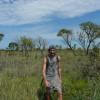

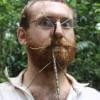






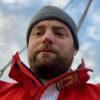








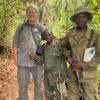




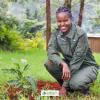






14 April 2024 7:46pm
Saul Greenberg is a great guy! He has made a few very useful videos regarding the Timelapse/Megadetector integration:
https://grouplab.cpsc.ucalgary.ca/grouplab/uploads/Publications/Publications/2021-05-ImageRecognition-Video.mp4
and a tutorial:
https://saul.cpsc.ucalgary.ca/timelapse/uploads/Videos/Video-TimelapseImageRecognitionGuide.mp4